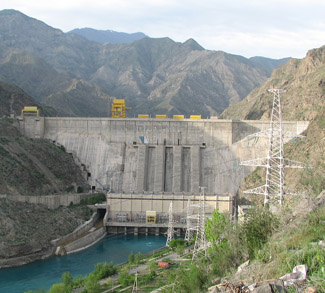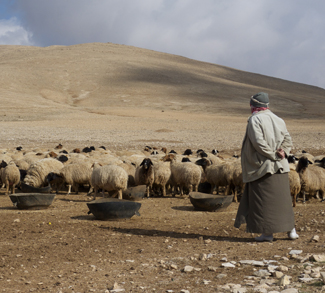Summary
The Great Ethiopian Renaissance Dam (GERD) could well end up as a template for international water conflict in the 21st century.
The dam is currently under construction in the Benishangul-Gumuz region of Ethiopia on the Blue Nile. Once completed, the dam will be the largest of its kind in Africa, producing an expected 6,000 MW of electricity.
The Grand Ethiopian Renaissance Dam will bring some obvious economic and development benefits for Ethiopia in the form of electricity production, employment, and drought protection. These, along with the sheer size of the endeavor, have helped the government present the Renaissance Dam as a patriotic cause célèbre for Ethiopians, who have been lining up to buy GERD bonds and demonstrate their love of country.
Downriver the mood is more somber. The Renaissance Dam could be a game-changer for Egypt’s water supply, restricting agricultural output, impacting livelihoods, and incurring new costs as the Egyptian government looks to more capital-intensive options to deal with its coming water shortfall. All the while Cairo must face up to a grim geopolitical reality: it is at the mercy of Addis Ababa’s decisions on the Renaissance Dam’s initial fill rate (currently 5-7 years; the longer it is, the more staggered the impact), and any future decision concerning reservoir levels.
A lack of technical details is further clouding matters. No one knows just how much of an impact the Renaissance Dam will have, and reports assessing the hydrological and social impacts of the dam are expected to be published after construction is complete.
Background
National Nile water rights were heavily influenced by colonial politics of the early 20th century, largely through a 1929 agreement between Egypt and the British authorities that granted Cairo a large allocation of water resources along with veto power over any new upstream construction projects. The subsequent history of Nile water diplomacy has been that of upper riparian states like Ethiopia, Kenya, Tanzania, and Uganda, attempting to dislodge some of these favorable rights conveyed on Egypt and Sudan in the first half of the century.
Their diplomatic struggles came to fruition in March of 2015, when the leaders of Egypt, Sudan, and Ethiopia gathered in Khartoum to sign a new Nile agreement. The March Declaration was notable because it was the first time that Egypt officially acknowledged that its colonial-era rights were untenable over the long term.
One major point of the agreement was Egypt accepting that it could not stop the construction of the Renaissance Dam for any reason. In exchange, Addis Ababa pledged to consult closely with Cairo on technical matters such as fill rate and feasibility studies such that neither state’s water rights would be infringed upon. This air of cooperation has since broken down in later talks as it became clear that mutually agreed-upon feasibility and impact studies would not delay or alter the dam’s construction. Ethiopian negotiators are also stonewalling Egypt’s push to change the dam reservoir’s fill rate from 5-7 years to 11 years.
The dam’s reservoir is a massive 1,680 square kilometers, holding the equivalent of the annual flow of the Blue Nile near the Sudan-Ethiopia border. According to the International Rivers NGO, filling the reservoir will sap 12-25% of the Nile’s flow in Egypt, and evaporation could claim 3 billion cubic meters of water a year (equivalent to three times Egypt’s annual rainfall).
The Grand Ethiopian Renaissance Dam is expected to be operational by July 2017.
Impact
Egypt between a rock and a dry place. The Egyptian government’s acceptance of the March 2015 agreement reflects the grim geographical reality that it doesn’t have any control over what happens upstream of the Nile River, which is the historical lifeblood of its economy.
The list of potential ramifications is long, and the lack of any exhaustive impact assessments makes it all the more grave for the Egyptian authorities. These ramifications include: altering seasonal flooding of the river (for better or worse); altering the composition of the river such that it impacts drinking water supplies in Egypt (the country is already facing drinking water shortages due in large part to Nile pollution); accelerating erosion along Egypt’s Mediterranean coast; reducing fish stocks in the Nile in both Sudan and Egypt; and drying out irrigation systems that are depended on by Egypt’s 40 million farmers.
The stakes are clearly high here. The Nile provides 90% of Egypt’s water, and the country has already been experiencing severe water shortages even before GERD begins operation. These drought conditions and water shortages are also being felt in northern Ethiopia, which is adding further impetus to complete the dam on its original schedule.
In 2015, the UN predicts Egypt will be in a state of “absolute water crisis” due to a growing population and fixed supplies.
Ethiopian government not in a position to back down. Construction of the Renaissance Dam will bring benefits to Ethiopia, chief among them increased electricity generation and drought relief. For these reasons, and the sheer scale of the project, the dam has become a nationalist rallying cry in the country’s politics, with its completion being presented as a coming out party for Ethiopia’s development success story. The dam’s financing reflects this patriotic character: citizens came out to buy bonds in droves and do their “duty” for the nation. In some cases, government workers were encouraged to devote several months of their salary toward buying GERD bonds, even despite their low wages and relative high cost of living.
This nationalist fervor complicates ongoing negotiations between Egypt and Ethiopia, because the latter is not in a position to back down. So far, no major concessions have been made on the part of the Ethiopians, and it’s unlikely that this will change before the dam becomes operational in 2017. Should the dam go online and there be a serious environmental crisis, diplomatic channels might not necessarily be sufficient to resolve the problem.
Conflict not out of the question. Egypt is a country grappling with many serious problems – widespread unemployment, water shortages, a deteriorating security situation along its eastern and western borders – and most of them reached a boiling point in the lead-up and aftermath of the Arab Spring. Ethiopia, too, is dealing with a growing protest movement for Oromo land rights, which has been covered extensively on Geopoliticalmonitor.com.
The stakes are high, and passions on both sides of the border are inflamed. Conflict here could come in two forms: internal or external. In Egypt, knock-on water effects could manifest in greater domestic instability at a time when the al-Sisi government is still struggling to establish its legitimacy in the post-Arab Spring era. Economic shocks are the last thing the al-Sisi government needs, and in order to divert attention away from its own poor economic stewardship, it could start saber rattling against the Ethiopian government over the Renaissance Dam.
A war would make little strategic sense, as destroying the Grand Ethiopian Renaissance Dam wouldn’t necessarily solve the problem over the long term. Then again, history has proven time and time again that human conflict is anything but logical.




